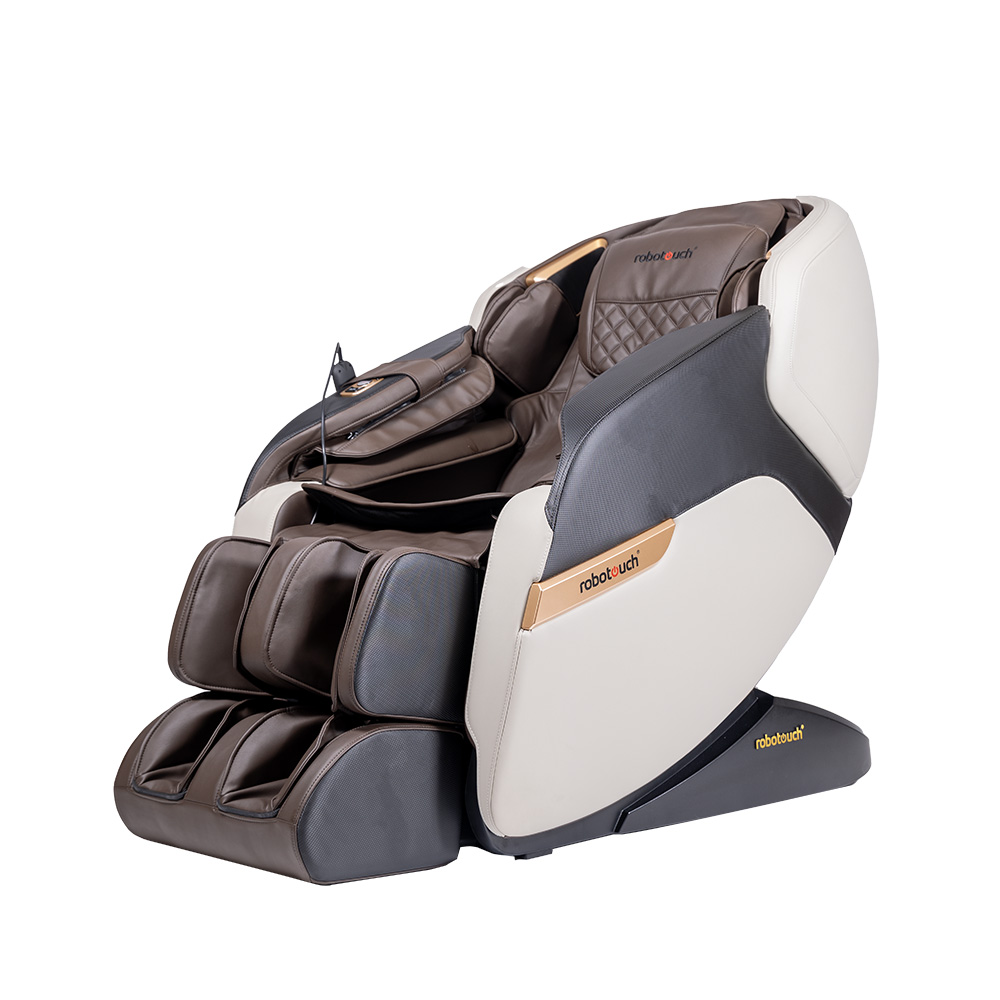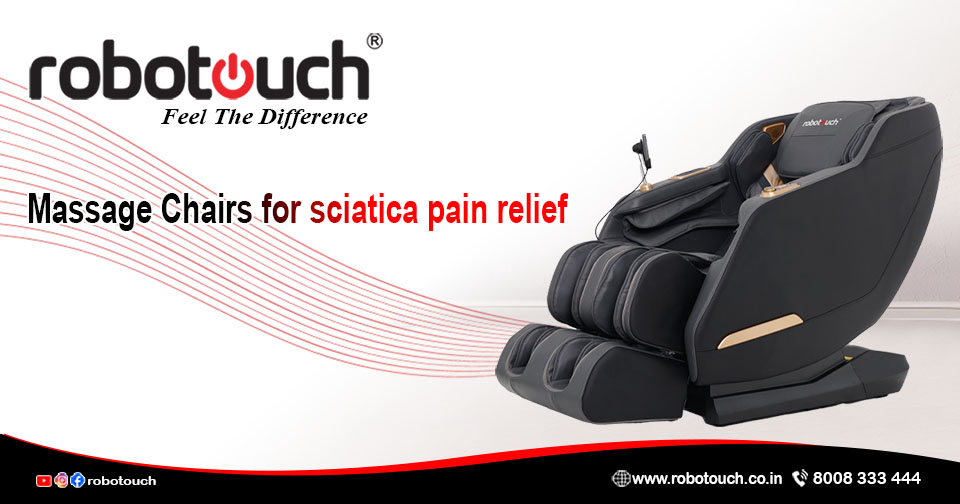Sciatica pain can be debilitating, affecting everyday activities and overall quality of life. The sharp, radiating pain that runs from your lower back through your hips and down your legs is often caused by irritation or compression of the sciatic nerve. While professional treatment is sometimes necessary, there are many effective ways to manage and relieve sciatica pain at home. In this guide, we'll explore different methods of sciatica pain relief, including the benefits of massage therapy, using a sciatica pain relief massager, and other home remedies.
Causes of Sciatica Pain
Sciatica refers to pain that affects the sciatic nerve, the longest nerve in the body, which runs from the lower back through the hips, buttocks, and down each leg. The pain can range from mild discomfort to severe, sharp pain, often worsened by prolonged sitting, standing, or sudden movements. Common causes include:
- Herniated or slipped disc
- Spinal stenosis (narrowing of the spinal canal)
- Piriformis syndrome (spasms of the piriformis muscle)
- Degenerative disc disease
- Pregnancy

Understanding the root cause of your sciatic pain is essential for finding the most effective treatment. While professional diagnosis and treatment are crucial, you can take several steps at home to alleviate discomfort and support long-term relief.


Sciatica Pain Relief Massage
Massage therapy is one of the most effective ways to relieve sciatica pain at home. By targeting specific muscles, particularly those in the lower back, glutes, and legs, massage helps reduce tension, improve circulation, and alleviate pressure on the sciatic nerve.
Massage Techniques for Sciatica Pain Relief
Some of these techniques include: There are several massaging techniques that maybe applied on the affected part for the alleviation of the SCIATICA PAIN.
There are several massage techniques that can help ease sciatica pain:The following are some of the massage methods that can assist in relieving sciatica:
Deep Tissue Massage
Swedish massage is based on the theory that is said to work deeper in to the muscle and connective tissues. It is very helpful in the management of muscle spasm particularly in the lumbar region and the gluteal region. Sciatyc nerve pressure which may be because of tight muscles can be eased by deep bone massage hence the pain can be eased.
Trigger Point Therapy
Therefore the signs and the pain which is related to sciatic can also be attributed to the call contraction of the muscle known as piriformis muscle. Trigger point therapy focuses on those sensitive spots which in turn decrease the muscle rigidity and also increases flexibility.
Myofascial Release
This technique targets the space that is located around muscles often referred to as the fascia. Myofascial release is therefore a means of applying gentle sustained mobilisation to restricted layers of the fascia to decrease pain and improve joint flexibility.
Swedish Massage
Nevertheless, it is well known that Swedish massage is applied for relaxation purposes, which means that it can also have positive effects on the blood circulation and decrease inflammation which can cause the sciatica pain.
But if you cannot get to a massage therapist, you can always get a sciatica pain relief massager and do it by yourself at home. Concerning the models of massagers used with aim to relax the muscles of the lower back and legs, it is possible to distinguish several ones. These devices can be used daily and as such, are part of the sciatica back pain self treatment.
Massage Chair for Sciatica Pain Relief
A massage chair for sciatica can be a game-changer for those suffering from chronic sciatic pain. Modern massage chairs come equipped with various features that target specific pain points, making them an excellent investment for long-term relief.
Benefits of Using a Massage Chair
Full-Body Relaxation
Massage chairs are designed to provide full-body relief, ensuring that the muscles in your lower back, legs, and glutes are thoroughly massaged, reducing tension and improving blood flow.
Heat Therapy
Many massage chairs include heating elements that can further relieve muscle tension and reduce inflammation, which is especially beneficial for sciatica pain.
Customizable Settings
You can adjust the intensity, duration, and area of focus on most massage chairs. For sciatica pain, targeting the lower back, hips, and legs can provide significant relief.
Daily Use
Unlike professional massages, a massage chair can be used daily without the need for an appointment or leaving your home. This makes it a convenient option for ongoing sciatica pain management.
Investing in a high-quality massage chair can provide not only comfort but also consistent relief from sciatica pain, making it an essential tool in your home treatment arsenal.
what robotic massage programs help sciatica pain relief
Deep Tissue Massage Program

This program focuses on applying firm pressure to the lower back, hips, and glutes, where sciatica pain typically originates. By targeting the deeper muscle layers, the massage helps release tightness that compresses the sciatic nerve, providing significant relief.
Stretching Program

Stretching programs in robotic massage chairs simulate gentle stretching techniques that help relieve pressure on the sciatic nerve. These programs typically focus on the lower back and legs, where the nerve runs, and help improve flexibility, reduce tightness, and encourage proper alignment of the spine.
Lumbar and Glute Focused Program

Sciatica often stems from tightness in the lumbar spine and gluteal muscles. This massage program targets these specific areas, using techniques like kneading and tapping to relieve tension and reduce pressure on the sciatic nerve. Focusing on the lower back and hips can help improve mobility and alleviate radiating pain.
Air Compression Massage Program

Some massage chairs use air compression to gently massage the legs and lower back. This technique helps improve circulation, reduces inflammation, and relieves muscle tension, which can reduce sciatic nerve pain. Air compression is gentle and ideal for those who need relief without intense pressure.
Heat Therapy Program

Heat therapy is often combined with massage in robotic chairs to enhance muscle relaxation and reduce inflammation. The heat penetrates deeply into the muscles, improving blood flow and helping to relax the muscles around the sciatic nerve, which can ease discomfort.
Shiatsu Massage Program

Shiatsu is a Japanese massage technique that focuses on applying pressure to specific points in the body to relieve tension. Robotic chairs with Shiatsu programs can target trigger points in the lower back, glutes, and legs, helping to release the tension causing sciatic nerve compression.
Zero Gravity Program

Many massage chairs offer a "zero gravity" setting that reclines the chair to evenly distribute body weight and reduce pressure on the spine. This position can relieve the compression on the lower back and sciatic nerve, making it a great complement to other massage techniques in relieving sciatica pain.
Full-Body Massage Program

This program covers the entire body, including the neck, back, hips, and legs, ensuring comprehensive muscle relaxation. It can help address secondary tension that might contribute to sciatica pain, such as tightness in the upper back or legs.
These robotic massage programs can be used regularly as part of a holistic approach to managing and relieving sciatica pain at home. The combination of massage, stretching, and heat therapy helps reduce nerve pressure, muscle tension, and inflammation for long-term relief.


Robotic Massage Therapy Techniques for Sciatica Pain
When considering massage therapy for sciatica, it’s essential to focus on areas where the pain originates. For most people, this includes the lower back, hips, glutes, and thighs. Techniques like kneading, circular motions, and deep pressure can be particularly helpful in reducing muscle tightness and relieving pressure on the sciatic nerve.
The lumbar region often holds tension, especially in people who sit for long periods. Gently massaging this area can release tight muscles and relieve pressure on the sciatic nerve.
The piriformis muscle, located deep in the glutes, can compress the sciatic nerve. Applying pressure to this area can help release tension and alleviate pain.
Massaging the hamstrings and calves can help improve circulation and reduce pain that radiates down the legs.
What More?
In addition to massage, there are several other methods you can use to manage sciatica pain at home:
- Stretching and Yoga: Stretching the muscles that surround the sciatic nerve can reduce pressure and improve flexibility. Yoga poses like the pigeon pose, child’s pose, and downward-facing dog are excellent for sciatica relief. Consistent stretching helps improve mobility and prevent future flare-ups.
- Heat and Cold Therapy: Alternating between heat and cold packs can reduce inflammation and muscle tension. Cold therapy helps numb acute pain and reduce swelling, while heat therapy relaxes tense muscles and improves blood flow.
- Over-the-Counter Pain Relievers: Non-steroidal anti-inflammatory drugs (NSAIDs) like ibuprofen can help reduce inflammation and provide temporary pain relief. However, they should be used sparingly and in conjunction with other treatments.
- Physical Exercise: While it may seem counterintuitive, staying active is crucial for managing sciatica pain. Low-impact activities like walking, swimming, and cycling can help strengthen the muscles surrounding the sciatic nerve, reducing pressure and preventing future issues.
- Foam Rolling: A foam roller can be an excellent tool for massaging tight muscles, particularly in the lower back, hips, and legs. Rolling out these areas can improve circulation and reduce muscle tightness, helping to relieve sciatica pain.






 Call Now
Call Now
 Chat on Whatsapp
Chat on Whatsapp